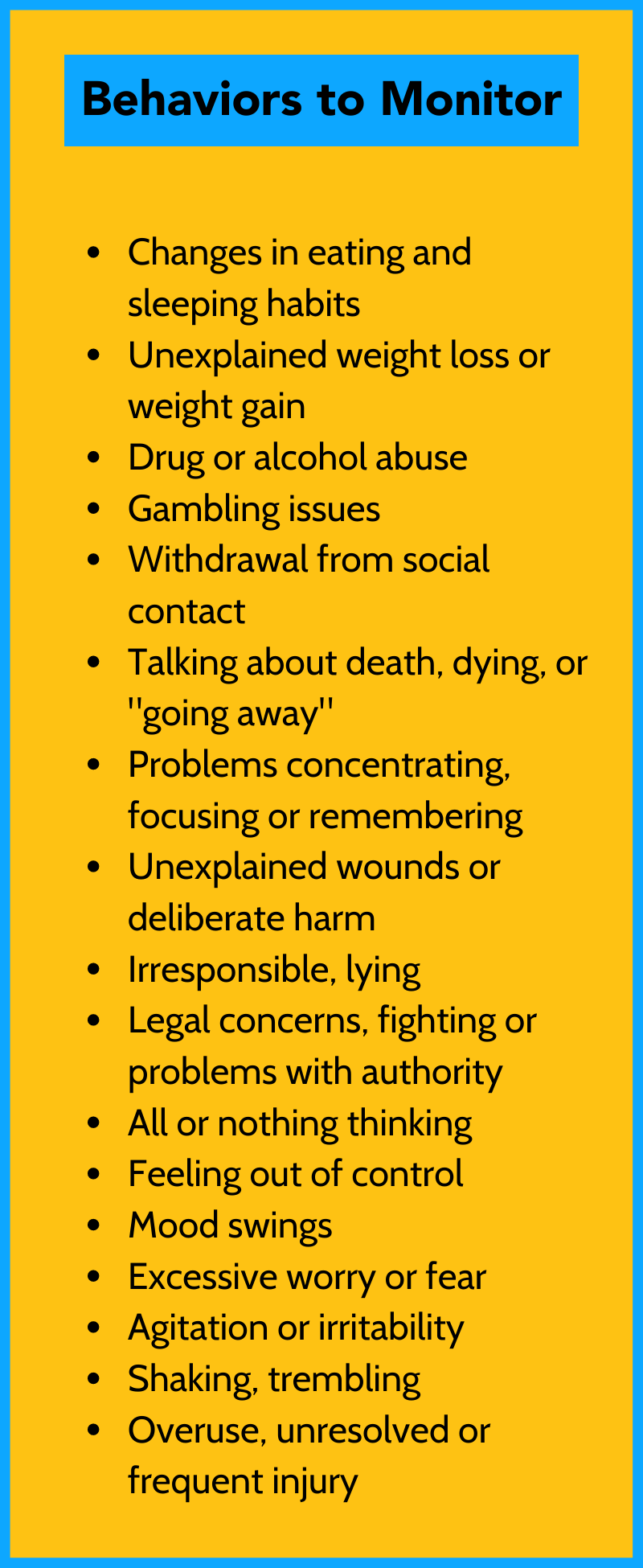Mental Health and Athletic Teens: What Parents Need to Know
We all know high school is stressful. If you’ve forgotten, think back to your freshman year. Add sports, competition and performance, and stress levels can skyrocket. Top that with COVID-19 restrictions, and it’s no wonder athletic kids today are stressed out.
“The adolescent brain is still maturing up to age 25,” said Timothy Neal, MS, ATC, assistant professor and athletic training program director at Concordia University, Ann Arbor, Michigan, and a member of the National Athletic Trainers’ Association. “The adolescent brain, when exposed to high stress levels, such as performing in the classroom and on the athletic field, is challenged to effectively keep events in perspective and develop coping mechanisms to address their continued stress.”
According to a consensus statement by NATA, demands and stressors on the student athlete can be physical, as in suffering a concussion; mental, such as meeting a coach’s expectations; and academic, as in maintaining the required grade point average to remain on the team.
Being a student athlete also means dealing with unique stressors that other non-athlete teens may not experience, such as the stress of staying athletically eligible, being cut from the team, dealing with injury, mistakes in play and early termination from the sport.
“Undoubtedly, experiencing overwhelming and/or ineffectively managed stress exposes an adolescent to poor long-term well-being,” Neal said. “Being an athlete does not provide immunity from these stressors.”
So, what can you do as a parent to help your child to prioritize their mental well-being?

Monitor your child’s behavior.
There are several behavioral patterns to look for when your child is suffering from stress. Some of the most common signs include lack of appetite or overeating; poor sleeping patterns; withdrawal or lack of interest in their sport or hobbies; easily agitated or a flat effect of emotions; and poor academic effort and results.
Open up lines of communication.
Talk to your child in a non-judgmental manner and offer your observations and concerns about their behavior. It’s OK if your child doesn't want to talk about it at first. Try again at a later time or under different circumstances.
“By opening up lines of communication and allowing their child to speak when ready, the parent can hear of the stressors and its effects,” Neal said. “Stress is a normal part of life, and it is normal for anyone to feel overwhelmed from time to time.”
Address possible solutions.
Talk about addressing the stressor with your child and discuss options your child believes would help. Involving your teen in the decision-making process to find a solution is key, Neal said.
“Forcing a resolution on someone who has no input into their own care rarely proves effective,” he said.
Seek help.
Lastly, if you’re concerned about the effects of stress and the unmanageable nature of the situation, seek counseling services through the school, family physician or social service agency. According to the NATA consensus statement, the athletic department and secondary school personnel have the trust of the student athlete, and the student athlete may turn to them for advice or assistance with a personal concern or during a crisis. Many schools have plans that address the mental health needs of their students and a health care team that includes athletic trainers, school nurses and administrators to develop and administer plans on an individual basis.
Maria Rosanelli Allen, LAT, ATC, head athletic trainer at Richardson High School in Richardson, Texas, said she implemented a health care plan recently for an athlete who began having panic attacks during practices and games.
“We needed to handle this so we invited the coaches, the athlete and the parents to discuss ways to help the student through episodes,” Allen said. “We developed a health care plan specifically for her.”
The plan consisted of signs for recognizing a panic attack, management tools and other resources on anxiety, Allen said.
“We also discussed scenarios, like away games, and had input from the student because we want them to feel empowered,” she said. “We made copies of the plan for all the coaches, the parents and other health care personnel on campus. The plan is open-ended so there is always room for improvement.”
May is National Mental Health Awareness Month. Download At Your Own Risk's infographic on Understanding Athlete Burnout and Mental Health in English, Spanish, Mandarin and French.
Related Articles and Resources:
